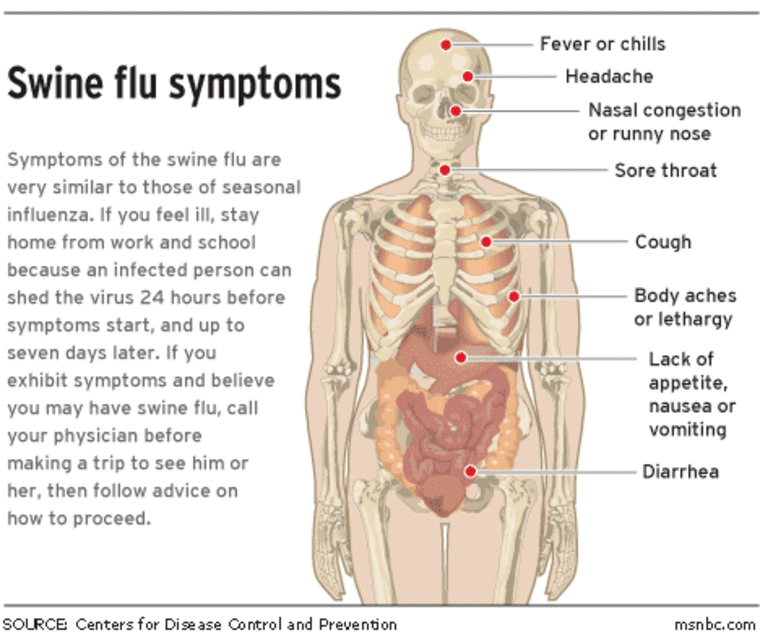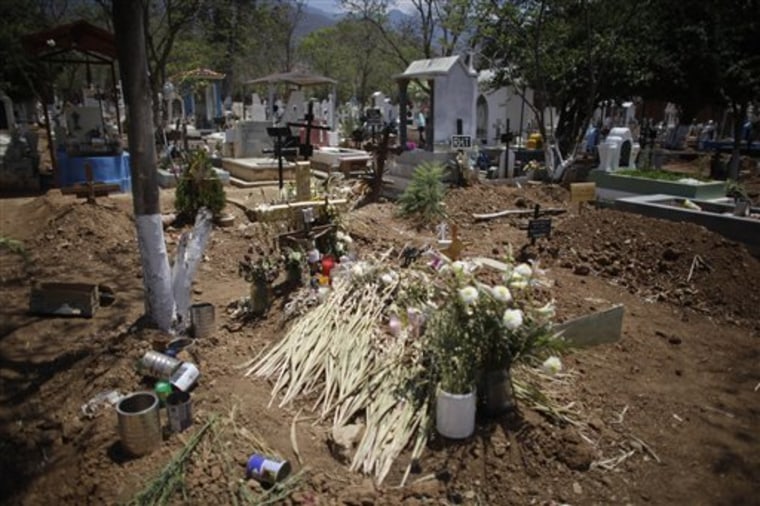A mother of three and a toddler on a family shopping trip are counted among the dead.
Among the survivors: a group of schoolkids from New York and a teacher from New Zealand.
All these days into the global swine flu scare, what do we know about the victims, living and dead? Sadly, very little.
Not even the numbers, really.
Health officials put the global death toll so far at 17 — 16 in Mexico and one a Mexican child who died while traveling in the United States. More than 700 more have been sickened in more than a dozen countries — from Canada to China, Germany to South Korea — and in almost two dozen U.S. states, from Washington to Florida, Maine to Arizona.
But officials say we may never know the exact number sickened by the virus with the scientific name H1N1.
Seeing people in Mexico die while many patients in more developed countries were barely inconvenienced, it seemed to Michelle Parkinson that where and how one lived meant the difference between life and death.
"You have to question how come it's been so easy for us to walk away," says the high school teacher from New Zealand, who contracted the virus while leading a three-week trip to Mexico. "We went to the doctors, not that unwell, and we've all recovered."
Parkinson said she would be surprised if any of the dead are "wealthy people who were living in relative ease." But diseases don't discriminate, and things are rarely that simple.
Little boy first confirmed case
The first confirmed case of the swine flu was indeed someone from a poor, rural part of Mexico.
Five-year-old Edgar Hernandez lives in La Gloria, a mountain village in the southern state of Veracruz where the swarms of flies and stench from nearby massive hog farms have become part of daily life. The angelic kindergartner shares neatly kept one-story, three-room house with his parents — field laborer and sometime bricklayer Edgar Sr. and Maria, a homemaker — and his 3-year-old brother, Jonathan Francisco.
By the time young Edgar became ill, people in La Gloria had been battling a strange respiratory illness for a month. Many of his neighbors blamed the hog farms for their sickness — a source dismissed by epidemiologists who say this virus had likely been moving between humans for months before the villagers got sick.
The last week of March, Edgar complained to his mother of a headache. He normally is very active, jumping into his mother's lap for hugs and kisses and wrestling on the couch with his brother, but all he wanted to do that day was stay in bed.
Edgar developed a high fever and a headache so bad his eyes hurt, but he came around after a clinic visit and a few days of medicine. The first week of April, just before the start of Holy Week, health workers took a mucus sample from the boy — the only one taken from those who fell sick in La Gloria that came back positive for swine flu.
Edgar's family would not be told of his diagnosis until April 27. By then, the flu already had claimed its first fatality — and she was neither poor, nor from the countryside.
Mother of three was first confirmed death
By Mexican standards, Adela Maria Gutierrez was decidedly middle-class. She and her husband, welder Jose Luis Ramirez, lived in his mother's two-story home, from which the family operates a convenience store.
In early April, the 38-year-old mother of three daughters had found temporary work with Mexico's tax collection agency, going door to door, working 15 hours some days to update the tax registry for Oaxaca state. During Holy Week, she had worked with another temporary employee, a woman from the same state where Edgar Hernandez lives.
That woman had a bad cough, Gutierrez's family recalled later.
On April 9, Gutierrez arrived at a hospital gasping for air, her hands and feet blue from oxygen deprivation. Five days later, she was dead.
Mexican toddler the first death in U.S.
Miguel Tejada Vazquez, the grandson of a Mexican media mogul, had plenty of access to health care. His great-uncle controls the Angeles Hospital chain, one of Mexico's largest private health providers. It still wasn't enough to save the 21-month-old boy.
The toddler fell sick while on a trip to Texas — visiting family in Brownsville, and on April 7, shopping at Houston's Galleria Mall, which counts Gucci, Louis Vuitton, Barneys and other upscale shops among its tenants.
Shortly after the shopping trip, Miguel — who officials say had some unspecified health conditions — began exhibiting flu-like symptoms. When the hospital in Brownsville could do no more for him, Miguel was transported to Texas Children's Hospital in Houston.
He died there Monday, becoming the outbreak's youngest fatality and still the only one outside Mexico.
Mexican officials have cited privacy reasons for not revealing the names and hometowns of the dead, but at least some broad demographic information has emerged.
Most fatalities between 21 and 39
Epidemiologist Pablo Kuri, an adviser to Mexico's health secretary, gave a brief survey of the 16 confirmed swine flu fatalities in that country to The Associated Press. They include four males and 12 females. Three children died — a 9-year-old girl, a 12-year-old girl and a 13-year-old boy. Four were older than 60, the oldest 68.
The other nine fatalities were between 21 and 39 — unusual ages for people to die of the flu, because they tend to have stronger immune systems.
People sickened in the U.S. range in age from 1 to 81, but most are younger than 20, according to the U.S. Centers for Disease Control and Prevention.
Officials say it is impossible to know how many victims might already have been buried days or weeks before we knew what we were dealing with. Two children in Edgar's village died of a respiratory ailment, but their families refused to allow the bodies to be exhumed for testing.
As for the sick, countless others — both the treated and untreated — may never know whether what they had was actually this new virus.
In the United States, more than 650 students and faculty at New York's St. Francis Preparatory School came down with symptoms after some returned from a spring break trip to Mexico, but only eight cases of actual swine flu were confirmed.
Senior Sophia Goumakos was one of them.
The morning after chatting with a friend about his trip to Cancun, the 17-year-old Queens girl was too nauseated to go to school. When doctors gave her Tamiflu four days later, she vomited it up, she told the New York Daily News: "I couldn't text. I couldn't watch TV. I could only look in one direction or I'd get sick."
By the time her case was confirmed, she and the others already were recovering.
For the teacher from New Zealand, the swine flu was little more than a nuisance.
Parkinson, 48, who teaches French and Japanese at the country's biggest high school, had led a group of 25 students and faculty on a tour that included Mexico City, a silver mine and the pyramids of Oaxaca.
Some members of the group were feeling mildly ill by the time they arrived home on April 25. They didn't realize until three days later that they were part of a growing global panic.
Parkinson says the illness she had seemed like a "common everyday garden-variety flu," and doesn't even know how high her temperature got. She was hospitalized overnight and took the rest of the week off from school as a precaution.
Sitting in her split-level, clifftop home outside Auckland Friday morning, a brilliant sun shining over a perfectly flat sea, she marveled at how blessed she and her students were.
"We came home and we got instant medical care, instant Tamiflu," she says. "And we're all fine."
Parkinson has been called a "victim" of the swine flu. For her part, she reserves that term for people like Gutierrez and young Miguel, who died.
"They set off the alarm bells for the rest of society," she says.

